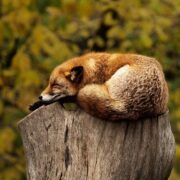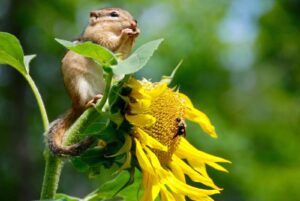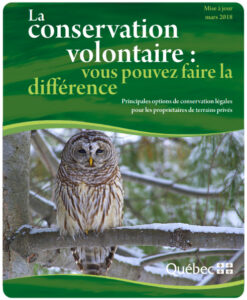Quebec’s biodiversity explained and applied!
WHAT IS BIODIVERSITY?
The term biodiversity comes from biological diversity and refers to the variety of organisms, species and ecosystems that inhabit our planet. When we talk about biodiversity, everyone has a role to play, from the microorganisms buried in the soil to the thousand-year-old trees that make up tropical forests. It is indeed the interactions between all these variations of life, within their environment, that maintain our ecosystems stable and healthy. And, should we all remember, stable ecosystems mean resiliency to climate change.
Hence is why, approximately once every two years, the world’s major decision-makers meet and discuss biodiversity. Last December, at COP 15, the Montreal’s settings inspired them to agree on targets proclaimed ambitious by lots of medias.
“30% of the world’s land and oceans must be protected by 2030.”
WHAT BIODIVERSITY DOES FOR US?
It is simply said, but it does just about everything! The balance of all Earth’s processes, biotic and even abiotic, are regulated by the many interactions of living beings.
Soil bacteria transform nitrogen to make it available. Then, mycorrhizal fungi, associated with roots, feed a tree by bringing nutrients to the sap. The tree will then filter the sun’s rays, capture CO2 and release water through evapotranspiration. The tree refreshes the environment in addition to providing a refuge for birds that will serve as a gourmet meal for carnivorous species… and it goes on. Everything is connected!
In concrete terms, biodiversity offers us ecosystemic services. Those are the benefits or work it does for us, such as regulating the climate by storing carbon. Biodiversity also ensures the balance in the rainfall and drought regime. Ecosystems act as giant filters, purifying the water and air that are essential to our survival. Not to mention the degradation of organic matter and the maintenance of soil fertility. This allows us to enjoy seasonal strawberries, or to fish good brook trout in our lakes.
IN QUEBEC, HOW IS IT PROTECTED?
Natural environments, landscapes and biodiversity are all elements of the natural heritage that have forged Quebec’s identity over the years. At least, this is what the preamble of the Natural Heritage Conservation Act (NHCA) states. The Act was created and then amended to meet the objectives discussed at the Convention on Biological Diversity (CBD), held in parallel with COP15. With some 40,000 species of plants and animals spread across a unique variety of ecosystems, from the tundra in the north to the estuaries of the river, Quebec has a lot to protect.
In the moment, 16.70% of continental environments, 12.22% of marine and coastal environments and 19.15% of the territories of the Northern Plan are under the protection of the NHCA. To find out where these protected areas are located, you can consult the interactive map of Quebec’s protected areas Carte interactive des aires protégées du Québec (Only available in French). However, these percentages represent public protected areas only.
So, what about private lands?
The protection of natural environments on private lands is more difficult and delicate to put forward because it depends on the owners’ goodwill. However, several voluntary conservation actions can be undertaken by an individual, a company, a municipality, or an MRC.
A variety of legal conservation options are available to those who wish to protect their property and offer various advantages,
including tax reductions. To familiarize yourself with these options, consult the Ministry’s brochure here (Only available in French)!
By choosing the voluntary conservation option that best suits your needs, whether it is a nature reserve or a conservation easement, you are conserving the ecological services provided by your natural environment and protecting Quebec’s biodiversity.
If your curiosity is not satisfied and you still want to know more about the biodiversity of our province, consult the new information tool Biodiversité Québec. This scientific partnership raises awareness and shares the latest news on Quebec’s biodiversity.





